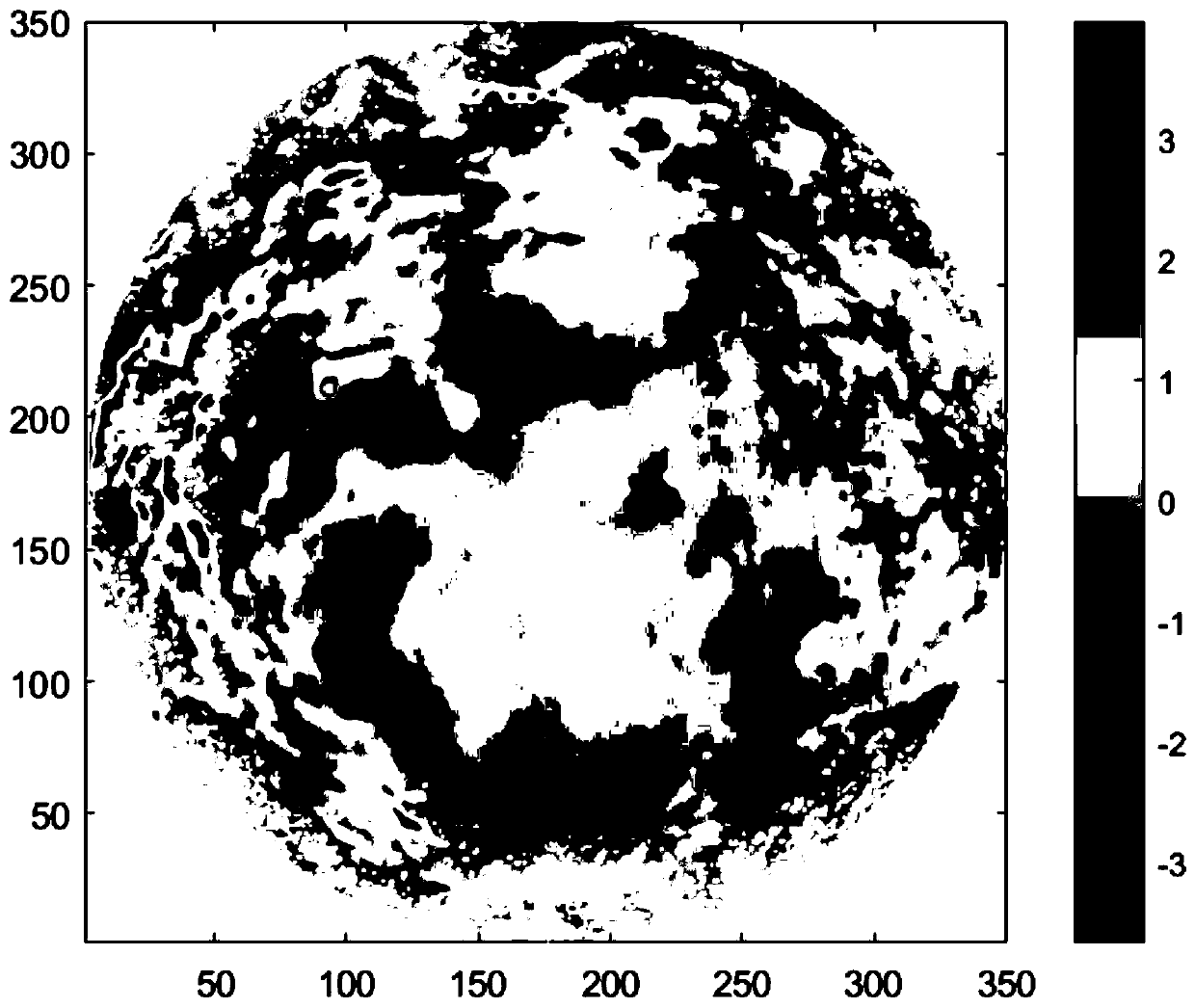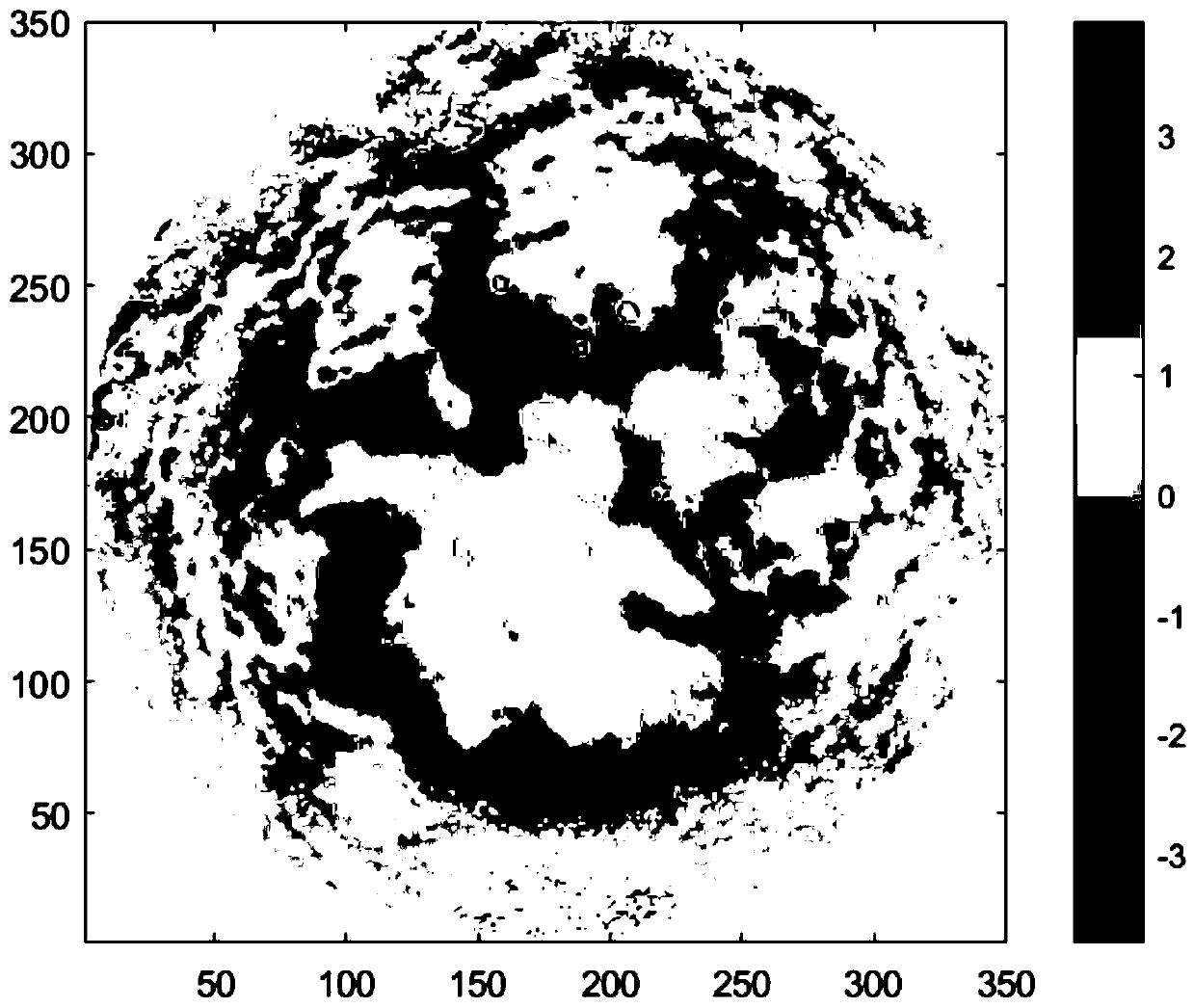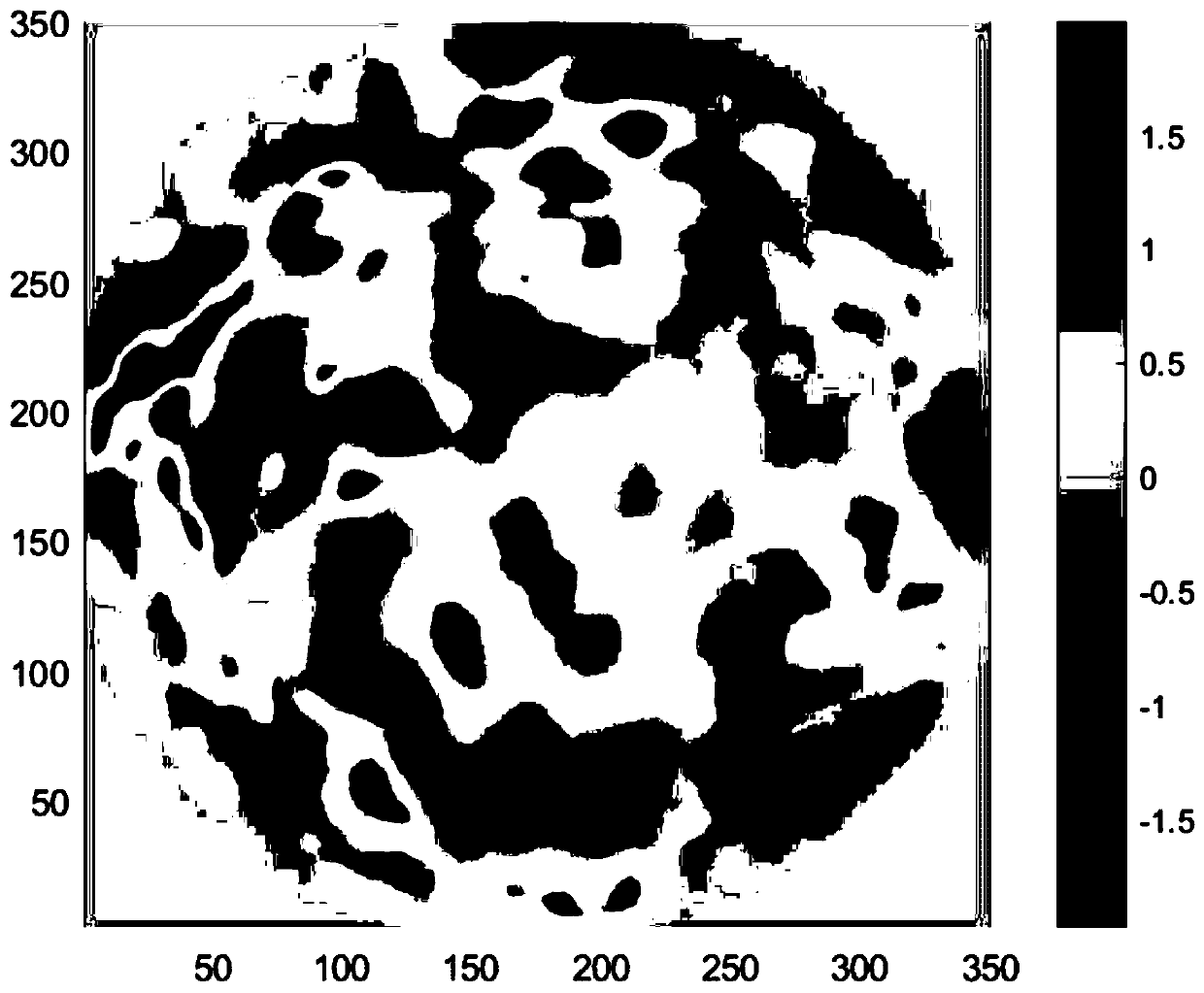Two-dimensional normalized Gaussian filter method for feature extraction of three-dimensional surface topography
A three-dimensional topography and topographic feature technology, applied in the field of image processing, can solve the problem of low accuracy of topographic feature recognition, and achieve the effect of improving the accuracy rate
- Summary
- Abstract
- Description
- Claims
- Application Information
AI Technical Summary
Problems solved by technology
Method used
Image
Examples
specific Embodiment approach 1
[0022] Specific implementation mode 1: The specific process of the two-dimensional normalized Gaussian filtering method used in the extraction of three-dimensional surface topography features in this embodiment is as follows:
[0023] Step 1. Set the input of the filter as the image three-dimensional shape f(u, v) and the cut length λ c , based on the resection length λ of the 3D topographic features of the image to be extracted c , calculate the Gaussian weight function g(x, y) of the two-dimensional Gaussian filter;
[0024] Step 2, establishing the template function bf(u,v) of the image three-dimensional shape f(u,v), avoiding the edge distortion problem of the filtering result;
[0025] Step 3. Make the Gaussian weight function g(x, y) of the two-dimensional Gaussian filter move point by point on the three-dimensional shape f(u, v) of the input image, and calculate the normalized filter when moving to (u, v) The result t(u, v), when all positions are moved, the obtained ...
specific Embodiment approach 2
[0026] Specific embodiment 2: The difference between this embodiment and specific embodiment 1 is that the input of the filter in the step 1 is the image three-dimensional topography f(u, v) and the resection length λ c , based on the resection length λ of the 3D topographic features of the image to be extracted c , to calculate the Gaussian weight function g(x, y) of the two-dimensional Gaussian filter, the specific process is:
[0027] The Gaussian weight function g(x, y) of the two-dimensional Gaussian filter is expressed as:
[0028]
[0029] where α is the Gaussian filter constant, According to the Gaussian distribution, the value range of (x, y) is The number of matrix points after taking the value is recorded as N x with N y ; (x, y) is the point of the Gaussian weight function.
[0030] Other steps and parameters are the same as those in Embodiment 1.
specific Embodiment approach 3
[0031] Specific embodiment three: the difference between this embodiment and specific embodiment one or two is that in the step two, the template function bf(u, v) of the image three-dimensional topography f(u, v) is established to avoid the edge of the filtering result Distortion problem, the specific process is:
[0032]
[0033] The boundary is (u, v) is the point of the shape feature to be filtered.
[0034] Other steps and parameters are the same as those in Embodiment 1 or Embodiment 2.
PUM
 Login to View More
Login to View More Abstract
Description
Claims
Application Information
 Login to View More
Login to View More - R&D
- Intellectual Property
- Life Sciences
- Materials
- Tech Scout
- Unparalleled Data Quality
- Higher Quality Content
- 60% Fewer Hallucinations
Browse by: Latest US Patents, China's latest patents, Technical Efficacy Thesaurus, Application Domain, Technology Topic, Popular Technical Reports.
© 2025 PatSnap. All rights reserved.Legal|Privacy policy|Modern Slavery Act Transparency Statement|Sitemap|About US| Contact US: help@patsnap.com



